Japanese Green Tea - Philosophy, Well-being, and Harmony in a Cup
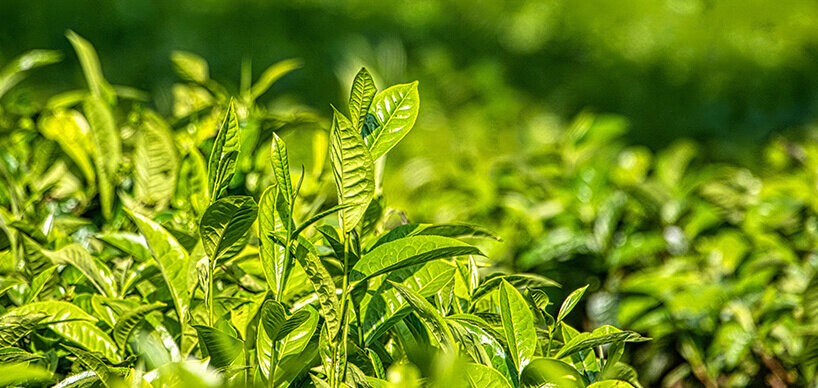
Green tea (Ryokucha) truly has a long tradition in Japan. In the country known for the tea ceremony, green tea is a favorite beverage and is often gifted to wish loved ones a healthy life. It's understandable considering the precious and diverse ingredients, values, and flavors that come with Japanese green tea.
Japanese green tea - how the aroma of a lifestyle was created
Tea has been known in China for over 3000 years and was initially consumed as food before it was first infused in water. In the year 805 AD, Buddhist monks Saicho and Kukai brought tea seeds from China to Japan, laying the foundation for Japanese tea culture. As farmers began to cultivate tea, knowledge of the health benefits of green tea spread throughout Japan. Regular consumption of green tea reduces the risk of cardiovascular diseases and cancer. In the 13th century, green tea transitioned from noble houses to the samurai and eventually became a staple in every Japanese household.
Japanese green tea reflects the values of the tea ceremony: tranquility, purity, respect, and harmony, with a particular emphasis on humility and appreciation for nature. The aesthetics of tea utensils and the choreography of the preparation frame the beverage. Japanese green tea has become more than just a drink – it has become a cultural asset of Japan. This phenomenon was documented by Okakura Kakuzō in his famous "Book of Tea" in 1906.
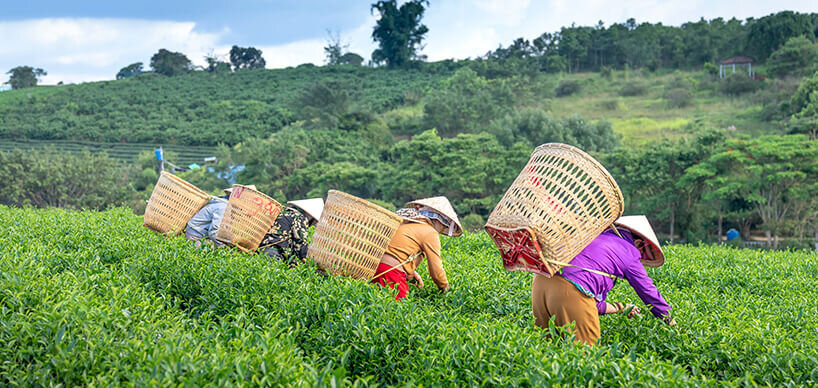
The right month for every type of tea
What sets green tea apart from other varieties is that it is not fermented. Right after harvesting, the leaves are heated by steaming, roasting, or pan-frying before being dried. This process preserves the green color of the tea. Discovered in the 8th century in China, this method gave birth to green tea.
Almost half of all Japanese green teas are cultivated in the Shizuoka Prefecture, on the east coast south of Tokyo. Uji, a city near Kyoto, is particularly known for cultivating high-quality green tea. Harvesting takes place from April to September, with the exact time of plucking greatly influencing the tea's quality.
The word for "tea" in Japanese is 茶 - Cha, or respectfully O-cha. The tea first harvested is called Shincha – as shin means "new." Shincha is the freshest, most valuable tea, followed by Ichibancha (first harvest, literally "first tea" in April and May), Nibancha (second harvest in June and July), and Sanbancha (third harvest in August and September). The earlier the tea is harvested, the sweeter and more flavorful its taste.
All green tea varieties come from the same plant. The difference lies in how long they are exposed to air and how they are heated. The steaming process is automated today and is the fastest. Afterward, the tea leaves are mechanically rolled tightly to achieve their characteristic needle shape. They are then dried using hot air, and the sieving, sorting, and packaging process begins. For high-quality teas, the aesthetics and uniformity of the tea leaves play a significant role.
Japanese green tea - tea variety from light green to copper
It all began with Sencha, a light and bright green tea variety that was the first to be brewed in Japan and is now more commonly consumed than any other. This tea is made from young, fine leaves – in contrast to the somewhat coarser, less esteemed Bancha, which is made from leaves of the last harvest.
When the idea arose to shade tea trees with bamboo mats from the sun, the varieties Matcha and Gyokuro were born. These are characterized by a unique umami taste. The savory Gyokuro tea is sweeter than Matcha and is considered the highest quality of all varieties, as the name suggests, translating to "precious dewdrop." Through shading, it preserves a particularly high amount of amino acids, chlorophyll, and minerals, giving it a rich, savory flavor and a noble bitter note.
Houjicha is the most unusual among green tea varieties because it initially looks like black tea. This is because it is additionally roasted after harvesting. You can also taste this: Unlike the other varieties, it has a nutty and piquant flavor. However, Houjicha is considered a second-choice tea because it is made from discarded Sencha or Bancha leaves. Nevertheless, it has a special function: due to its low caffeine and acidity content, "roasted tea" is the perfect drink for infants and seniors in Japan, and when served cold, it is a great refreshment in the summer.
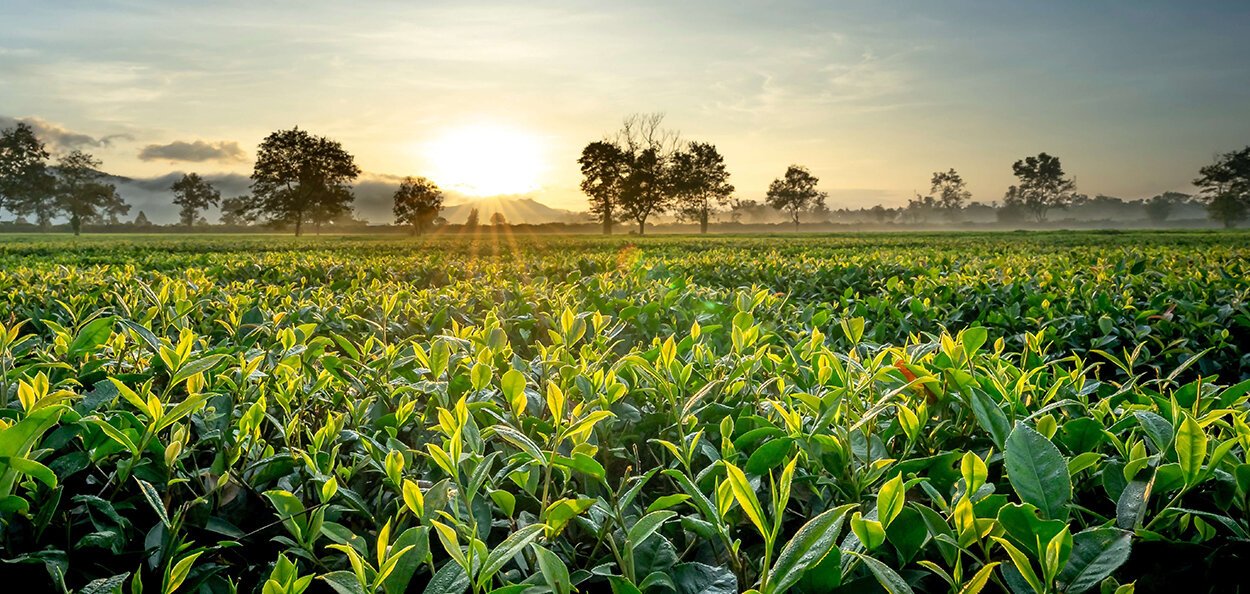
Creative potential of a tea plant
Another variety that grows shaded is Kabusecha. The individual bushes are covered with nets one week before harvest, which is why the name means "covered tea." This makes Kabusecha particularly fresh, grassy, and sweet – because less sunlight means fewer bitter compounds in the tea.
Tea plants, however, have even more to offer: In addition to the leaves, you can create a new treat from other parts. For example, Kukicha Tea – "Twig Tea." Here, you mix stems and leaf veins from Sencha Tea, Gyokuro Tea, or Kabusecha with some leaves. Despite its more affordable price, this Japanese green tea tastes unusually good: Kukicha Tea is fruity, mild, and creamy due to the low caffeine and bitter compounds in the stems.
Because rice is highly valued in Japan, it must not be missing in drinks. Mixing it with green tea results in Genmaicha. Half of this tea consists of Bancha or Sencha leaves, while the other half is roasted brown rice grains (Genmai), which provide a caramel-like aroma. These characteristics make Genmaicha Tea the sweetest of all green tea varieties.
The art of enjoying Japanese green tea
For optimal enjoyment, Japanese green tea requires soft water. It is best to prepare it with spring water from a bottle. Then make sure to select the right amount of tea leaves. For 0.25 liters of water, use about 5 grams (1 – 1.5 heaped teaspoons) of Sencha, Kabusecha, Kukicha, or Houjicha; for Gyokuro and Genmaicha, you need roughly twice the amount of tea.
When it comes to temperature, things get a bit more complicated. To preserve the delicate aroma of Japanese green tea, never use boiling water; let it cool down first. The fastest way to do this is by pouring it into a cup or another container, losing 5 – 10 degrees of heat. Gyokuro Tea requires water at 40 – 60 degrees, while it's 60 – 65 degrees for Kabusecha. Sencha Tea is best with water at 60 – 70 degrees. On the other hand, Houjicha, Kukicha, and Genmaicha Tea should be brewed at 80 – 90 degrees. The higher the quality of the tea, the lower the temperature can be.
How long should you let the Japanese green tea steep? While 1 – 2 minutes are sufficient for most tea varieties, Gyokuro Tea takes 2 – 3 minutes for the perfect cup. It's interesting to note that for Japanese green tea, the pot is left open to observe how the tea leaves unfurl.
Cups of about 40ml are optimal for Japanese green tea. When pouring the tea into the cup or teacup, don't forget the last drops as they contain a lot of flavor. If you appreciate the bitter notes in green tea, you can enjoy them particularly well by reinfusing (two to four times).
In Japanese style, hold the cup with your right hand on the side while supporting the bottom with your left hand. Enjoy your cup of green tea and immerse yourself in the world of this traditional beverage with a rich history.


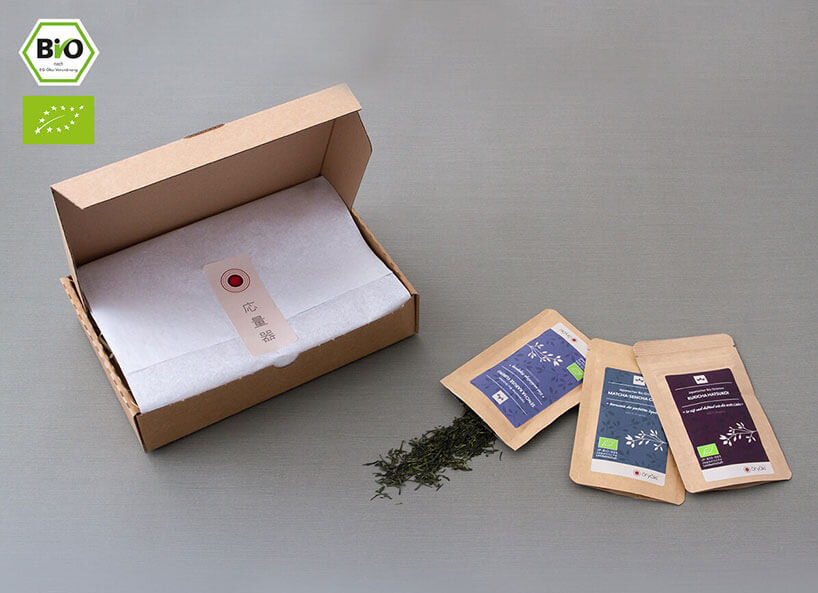
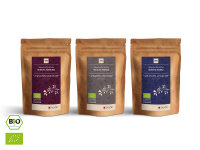
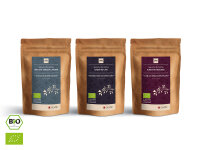
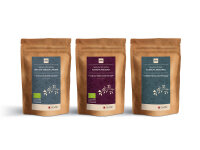
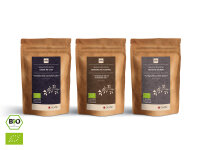
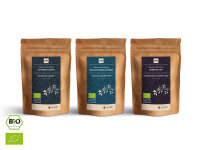
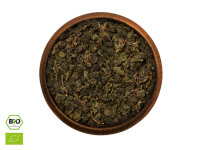
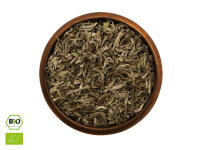
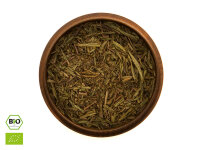
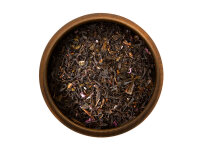
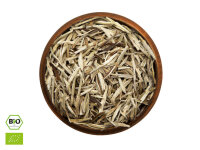
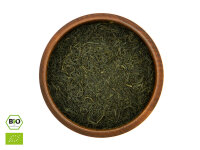
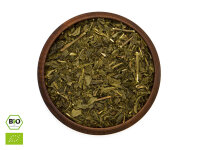
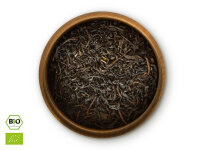
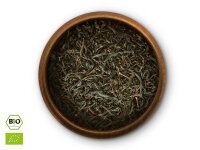
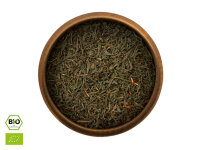










-from-the-yakiyaki-grill-pan.jpg)




